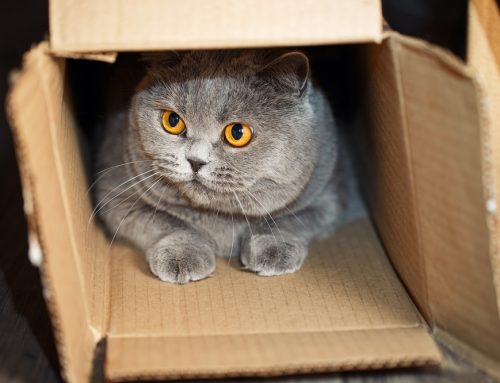Cats are particular about their bathroom requirements, and you may find yourself cleaning up “accidents” if your whiskered friend’s litter box is not to their liking. Our Heritage Veterinary Clinic team knows that your cat’s refusal to use their litter box can be extremely frustrating, so we offer a litter box tutorial to ensure your feline’s powder room is up to snuff.
Clean your cat’s litter box regularly
Cats are fastidious groomers who like a clean environment and will likely turn up their nose at a dirty litter box and find a more acceptable location to do their business. Tips to ensure your cat’s litter box cleanliness meets their standards include:
- Scoop often — Scoop your cat’s litter box at least once a day—more if possible.
- Refresh litter weekly — Toss out the litter, clean the box with a mild cleaner, and refresh the litter once a week.
- Replace the litter box — Plastic absorbs odors, so you should replace a plastic litter box every six months to protect your cat’s sensitive nose. Investing in stainless steel litter boxes avoids frequent replacements.
- Provide a welcome mat — If your cat tracks litter throughout your home, consider non-tracking litter, or place a mat in front of their litter box.
Provide enough litter boxes for your cat
Cats like to have rest room options, and most do not like to share. Ensure you have enough litter boxes for your whiskered friend by following these tips:
- Number — Provide at least one litter box for every cat in your home, plus one extra.
- Placement — Do not place litter boxes close to each other, because your cat will see this as one box.
- Convenience — Provide one litter box for each level of your home, so a box is always convenient for your cat. This is especially important for kittens and senior cats.
Place your cat’s litter boxes appropriately
The litter box’s location is extremely important if you want your cat to use the box. Tips include:
- Easy to find — Place litter boxes in easy to find locations. This is especially important for kittens and senior cats affected by cognitive dysfunction.
- Options — Provide several litter boxes in various locations throughout your home.
- Consistency — Once your cat uses their litter box consistently, don’t move the box.
- Privacy — Find a private location where your cat won’t be interrupted by other pets or family members. Baby gates can help prevent unwanted guests.
- Tranquility — Choose a quiet spot, avoiding areas next to the washing machine, dryer, air conditioner, furnace, and other noisy appliances that may startle your cat.
- Safety — Find a location where your cat can easily see people and other pets approaching when they are in the box, and ensure they can escape if necessary. Cats will often avoid places where they can feel cornered or ambushed.
- Separation — Do not place your cat’s litter box near their food and water. If the box must be in the same room where your cat eats, ensure the box and the bowl are at least five feet apart.
Ensure your cat’s litter box is the right size and shape
Your cat needs space to do their business, and other box factors that can affect their toilet habits include:
- Choose a box that is the same length as your cat from their nose to the tip of their outstretched tail and the same width from their nose to the base of their tail. If your cat is especially large, consider using extra-large plastic sweater boxes to ensure your feline friend has enough room to scratch and can comfortably turn around.
- Senior cats and kittens may need a litter box with low sides that they can get in and out of more easily.
- Most cats don’t appreciate covered litter boxes, because they feel trapped.
Ensure the litter is acceptable to your cat
Most cats prefer soft clumping litter, because the small particles are gentler on their feet. Other tips include:
- Don’t change brands — If your cat uses their litter box, don’t switch brands to save money or try something new.
- Avoid scented litter — Many people use scented litter to help mask litter box odors, but cats typically don’t like a strong smell. A clean litter box shouldn’t smell.
- Use the right litter amount — Most cats don’t like deep litter. The recommended depth is two to three inches.
What if your cat still “thinks” outside the box?

If you follow these litter box rules and your cat continues to eliminate outside the box, suggestions include:
- Scheduling a veterinary appointment — Cats affected by illness or pain often communicate their discomfort by eliminating outside the litter box. Schedule an appointment with our Heritage Veterinary Clinic team, so we can ensure a medical condition, such as kidney disease, feline lower urinary tract disease (FLUTD), or arthritis, isn’t contributing to the problem.
- Reducing stress — Cats are easily stressed, and may respond by eliminating inappropriately. Ensure your cat’s environment is as low-stress as possible. Considerations include:
- Is one cat in your household bullying another?
- Did your schedule recently change?
- Have you recently welcomed a new family member or pet?
- Are you renovating your home?
- Providing enrichment — Ensure your cat is exercised mentally and physically to prevent boredom.
If your cat refuses to use their litter box, contact our Heritage Veterinary Clinic team, so we can determine whether a medical condition is the reason for their indiscretion.







Leave A Comment